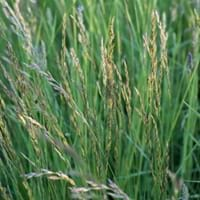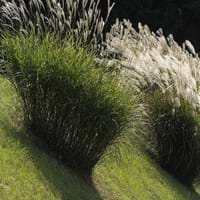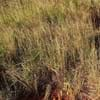Life Span
Annual
Perennial
Origin
Eastern Europe, Northern Europe, Russia/Siberia, Western Asia
Hybrid origin
Types
Not Available
Not Avaialble
Habitat
Grassland
Lake Sides, savannahs
USDA Hardiness Zone
3-7
5-9
AHS Heat Zone
7 - 1
9 - 1
Sunset Zone
A2, A3, 1a, 1b, 2a, 2b, 3a, 3b, 4, 5, 6, 15, 16, 17
1a, 1b, 2a, 3a, 3b, 4, 5, 6, 7, 8, 9, 10, 11, 12, 13, 14, 15, 16, 17, 18, 19, 20, 21, 22, 23, 24
Habit
Clump-Forming
Clump-Forming
Flower Color
Not Available
Not Available
Flower Color Modifier
Bicolor
Bicolor
Fruit Color
Not Available
Not Available
Leaf Color in Spring
Dark Green
Green
Leaf Color in Summer
Light Green
Light Green
Leaf Color in Fall
Dark Green
Green, Purple, Burgundy, Bronze
Leaf Color in Winter
Dark Green
Not Available
Leaf Shape
Grass like
Grass like
Plant Season
Spring, Summer, Fall, Winter
Summer, Fall
Sunlight
Full Sun, Partial Sun
Full Sun, Partial Sun
Type of Soil
Clay, Loam
Clay, Loam, Sand
The pH of Soil
Acidic, Neutral, Alkaline
Acidic, Neutral
Soil Drainage
Average
Average
Bloom Time
Summer
Early Summer, Summer, Late Summer, Early Fall
Tolerances
Not Available
Drought
Where to Plant?
Ground
Ground
How to Plant?
Seedlings
Rhizome division
Plant Maintenance
Medium
Medium
Watering Requirements
Medium
Average Water Needs, Do Not over Water
In Summer
Lots of watering
Lots of watering
In Spring
Moderate
Moderate
In Winter
Average Water
Average Water
Soil pH
Acidic, Neutral, Alkaline
Acidic, Neutral
Soil Type
Clay, Loam
Clay, Loam, Sand
Soil Drainage Capacity
Average
Average
Sun Exposure
Full Sun, Partial Sun
Full Sun, Partial Sun
Pruning
Remove damaged leaves, Remove dead branches, Remove dead leaves
Remove damaged leaves, Remove dead branches, Remove dead leaves
Fertilizers
All-Purpose Liquid Fertilizer
All-Purpose Liquid Fertilizer
Pests and Diseases
Red blotch
No serious insect or disease problems
Plant Tolerance
Drought
Drought
Flowers
Insignificant
Showy
Flower Petal Number
Single
Single
Fragrant Bark/Stem
Yes
No
Foliage Texture
Fine
Coarse
Foliage Sheen
Glossy
Glossy
Attracts
Cattle and horses
Crickets
Allergy
Heartburn, Nausea, Stomach pain
Not Available
Aesthetic Uses
Showy Purposes, small hedge
bank hedging, Mixed Border, Showy Purposes
Beauty Benefits
Not Available
Not Available
Environmental Uses
Air purification
Air purification
Medicinal Uses
Cancer, Diarrhea, Haemorrhages, Malaria
No Medicinal Use
Part of Plant Used
Leaves, Root
Whole plant
Other Uses
cultivated as pasture or hay crop, Used as a golf course turf, Used for pasture
Screen, Used as Biofuel, Used for making hedge
Used As Indoor Plant
No
No
Used As Outdoor Plant
Yes
Yes
Garden Design
Lawns and Turf
Hedges, Mixed Border, Screening / Wind Break
Botanical Name
LOLIUM perenne
MISCANTHUS Giganteus
Common Name
Perennial Ryegrass
Giant Silvergrass
In Hindi
Lolium perenne
Giant Silvergrass
In German
Lolium perenne
Riesenschilf
In French
Lolium perenne
géant silvergrass
In Spanish
Lolium perenne
Giant Silvergrass
In Greek
Lolium perenne
Giant Silvergrass
In Portuguese
Lolium perenne
Silvergrass gigante
In Polish
Lolium perenne
Giant Silvergrass
In Latin
Lolium perenne
Giant Silvergrass
Phylum
Magnoliophyta
Magnoliophyta
Class
Liliopsida
Lilopsida
Order
Cyperales
Cyperales
Clade
Angiosperms, Commelinids, Monocots
Angiosperms, Commelinids, Monocots
Tribe
Not Available
Andropogoneae
Subfamily
Not Available
Panicoideae
Number of Species
Not Available
Not Available
Properties of Perennial Ryegrass and Giant Silvergrass
Wondering what are the properties of Perennial Ryegrass and Giant Silvergrass? We provide you with everything About Perennial Ryegrass and Giant Silvergrass. Perennial Ryegrass doesn't have thorns and Giant Silvergrass doesn't have thorns. Also Perennial Ryegrass does not have fragrant flowers. Perennial Ryegrass has allergic reactions like Heartburn, Nausea and Stomach pain and Giant Silvergrass has allergic reactions like Heartburn, Nausea and Stomach pain. Compare all the properties and characteristics of these two plants. Find out which of these plant can be used as indoor plant. If you are interested to decorate your house and garden, find out aesthetic uses, compare them and select the plant which will beautify your surrounding. Along with beautification, try comparing medicinal and edible uses of Perennial Ryegrass and Giant Silvergrass and you can choose the plant having best and most benefits.
Season and Care of Perennial Ryegrass and Giant Silvergrass
Season and care of Perennial Ryegrass and Giant Silvergrass is important to know. While considering everything about Perennial Ryegrass and Giant Silvergrass Care, growing season is an essential factor. Perennial Ryegrass season is Spring, Summer, Fall and Winter and Giant Silvergrass season is Spring, Summer, Fall and Winter. The type of soil for Perennial Ryegrass is Clay, Loam and for Giant Silvergrass is Clay, Loam, Sand while the PH of soil for Perennial Ryegrass is Acidic, Neutral, Alkaline and for Giant Silvergrass is Acidic, Neutral.
Perennial Ryegrass and Giant Silvergrass Physical Information
Perennial Ryegrass and Giant Silvergrass physical information is very important for comparison. Perennial Ryegrass height is 45.70 cm and width 30.50 cm whereas Giant Silvergrass height is 240.00 cm and width 120.00 cm. The color specification of Perennial Ryegrass and Giant Silvergrass are as follows:
Perennial Ryegrass flower color: Not Available
Perennial Ryegrass leaf color: Dark Green
Giant Silvergrass flower color: Not Available
- Giant Silvergrass leaf color: Green
Care of Perennial Ryegrass and Giant Silvergrass
Care of Perennial Ryegrass and Giant Silvergrass include pruning, fertilizers, watering etc. Perennial Ryegrass pruning is done Remove damaged leaves, Remove dead branches and Remove dead leaves and Giant Silvergrass pruning is done Remove damaged leaves, Remove dead branches and Remove dead leaves. In summer Perennial Ryegrass needs Lots of watering and in winter, it needs Average Water. Whereas, in summer Giant Silvergrass needs Lots of watering and in winter, it needs Average Water.





